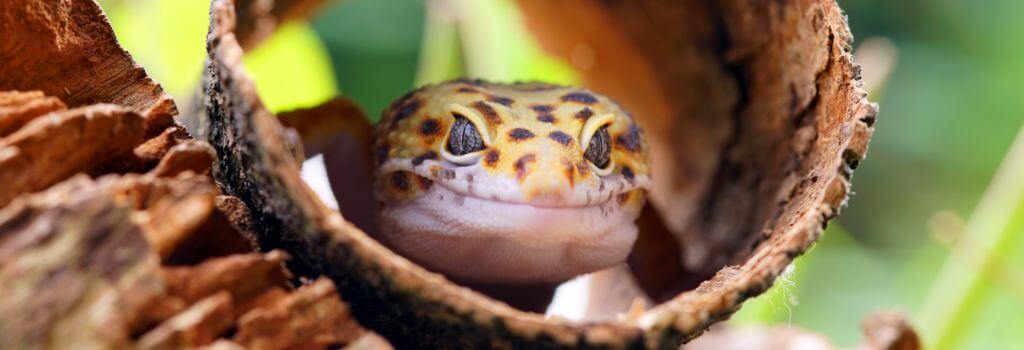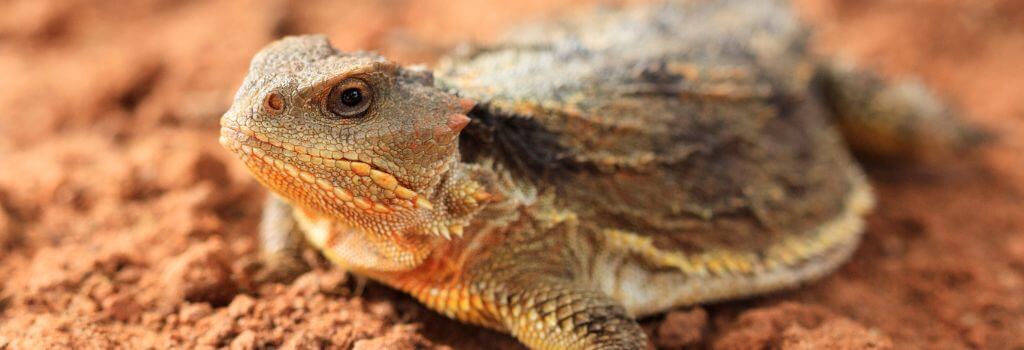Have you ever looked into the eyes of a gecko clinging effortlessly to your wall or marveled at the impressive spiny armor of an iguana? With their remarkable diversity and unique adaptations, lizards have captivated humans for millennia. On World Lizard Day — which takes place on August 14th each year — we celebrate these fascinating creatures.
Over 6,000 lizard species slither, climb, and scurry across the globe, each boasting incredible features. They play an essential role in maintaining ecological balance, from keeping insect populations in check to dispersing seeds through their droppings. Plus, certain species make amazing, fascinating pets. As veterinarians, we are privileged to care for these remarkable creatures and help ensure their well-being in captivity.
But what exactly makes lizards so special? Let’s dive into the world of these scaly creatures and explore some of the mind-blowing facts that make them awe-inspiring.

They Have Super Senses
Imagine being able to see not only visible light but also ultraviolet rays. That’s the reality for some lizard species. Their vision allows them to precisely navigate their environment, spotting prey basking in the sun or even detecting predators lurking in the shadows. And that’s not all! Some geckos, like the mourning gecko, boast a panoramic view, seeing almost 360 degrees around them!
Lizards don’t rely solely on sight for survival, though. Their sense of smell is equally impressive. Komodo dragons, for instance, can sniff out carrion from miles away, their forked tongues constantly flicking the air to pick up on minuscule scent particles. Even a pet leopard gecko uses its impressive olfactory abilities to track down tasty crickets during feeding time!
Lizards Are Masters of Disguise
In the game of survival, camouflage is king. Imagine a leaf that seems alive, scurrying across the forest floor. That’s the incredible leaf gecko, its body flattened and adorned with intricate patterns that mimic its leafy surroundings. Chameleons take it a step further. Their specialized skin cells allow them to change colors, seamlessly blending into their environment. This remarkable adaptation is a marvel of evolution, offering these lizards a crucial advantage in avoiding predators and catching unsuspecting prey.
They’re Built for Survival
Lizards have evolved incredible adaptations to thrive in diverse environments. Take a trip to the arid desert, and you might encounter a spiny lizard. These remarkable creatures have developed ingenious ways to conserve water in their harsh environment. Looking for a climber? Look no further than the gecko family. Their tiny toes are adorned with microscopic hairs, creating millions of adhesive points that allow them to defy gravity and scale even the smoothest surfaces.
Some lizard adaptations are truly out of this world. The aptly named flying dragon, also known as the Draco lizard, of Southeast Asia has skin folds that stretch between its elongated ribs, forming a membrane that lets them glide through the air with ease, allowing them to take impressive leaps between trees.
Not All Lizards Have Legs
While most lizards have four legs, there are also several species of legless lizards. They resemble snakes, but there are a few key differences. Legless lizards, for example, have eyelids, while snakes do not. Many legless lizard species are burrowers that live underground in loose soil and sandy environments.
They Exhibit Intelligent and Diverse Behaviors
Lizards aren’t among the most intelligent creatures on the planet, but don’t be fooled – some species possess impressive problem-solving abilities! Social interactions are another fascinating aspect of lizard behavior. While some species are solitary, others live in colonies and exhibit complex social behaviors. Territorial displays, intricate head-bobbing rituals and even communication through chirps and clicks (as seen in some gecko species) showcase the surprising social lives of these scaly creatures.
Reproduction in the lizard world is equally diverse. Parthenogenesis, a type of asexual reproduction in which females clone themselves without a mate, is a strategy employed by some species, like the Komodo dragon. This guarantees the species’ survival even in the absence of males.
Lizards Are the Subjects of Myths and Legends
The world of lizards is shrouded in myths and misconceptions. Perhaps the most common myth is that all lizards can regenerate limbs. While some species, like certain geckos, can regrow a lost tail, this remarkable ability doesn’t extend to limbs. Another misconception is that all lizards spit venom. While the Komodo dragon possesses a venomous bite, most lizards are harmless to humans and rely on other means to avoid threats.
Interestingly, lizards have held a special place in many cultures around the world for centuries. In some parts of Africa, geckos are symbols of good luck and fortune. In ancient Egypt, the Nile monitor lizard was associated with the sun god Ra. These cultural beliefs highlight humans’ long standing fascination for these captivating creatures.

Caring for Your Pet Lizard
So, you’re considering welcoming a lizard companion into your home? As veterinarians, we understand the joy and responsibility that comes with caring for these exotic pets.
Here’s what you need to do to provide your scaly friend with a happy and healthy life:
- Choose the Right Lizard: The first step is choosing a lizard species that aligns with your experience level and lifestyle. Beginners might find a bearded dragon or leopard gecko a good fit because they are easy to care for and have docile temperaments. More experienced keepers might opt for a crested gecko, known for their beautiful crests and nocturnal activity. Remember, each species has specific needs. Research thoroughly to ensure you can provide the proper habitat and care requirements.
- Create a Healthy Habitat: Like any pet, lizards need a comfortable, enriching environment to thrive. A properly sized enclosure is crucial. Arboreal species like crested geckos require tall terrariums with climbing branches, while terrestrial species like leopard geckos need ample floor space. Heating is essential for most lizard species. UVB lighting is essential for some species to have proper calcium absorption and bone health. Substrate selection is also important, with options ranging from paper towels for some species to bioactive mixes that mimic their natural environment for others. Hiding spots are vital for your lizard to feel secure, and enrichment items like climbing branches and live plants (for species that tolerate them) will keep them mentally stimulated. Maintaining proper humidity levels is crucial for some species, and misting the enclosure regularly might be necessary.
- Provide Appropriate Nutrition: Understanding your lizard’s dietary needs is essential. Insectivores require a steady supply of feeder insects like crickets and mealworms, dusted with calcium and vitamin supplements. Omnivores enjoy a mix of insects, vegetables, and commercial reptile pellets. Herbivores require a diet rich in leafy greens and fruits. Improper feeding can lead to malnutrition, vitamin deficiencies, and obesity.
- Provide Veterinary Care: Regular veterinary checkups are important for your pet lizard, even if they seem healthy. These checkups allow your veterinarian to detect potential health problems in their earliest stages.
Closing Thoughts
World Lizard Day is a reminder to celebrate these fascinating creatures’ incredible diversity and ecological importance. From their remarkable adaptations to their surprising problem-solving skills, lizards continue to amaze us. If you’re considering welcoming a lizard into your life, remember to do your research and provide proper care. As veterinarians, we are here to guide you on this journey and ensure your pet lizard thrives in its new home.
Don't have a vet in your area yet? We can help you find a local veterinarian.
If you have more questions, the GeniusVets Teletriage platform will give you unlimited access to text and/or video calls with board-certified veterinarians! To learn more click here.
